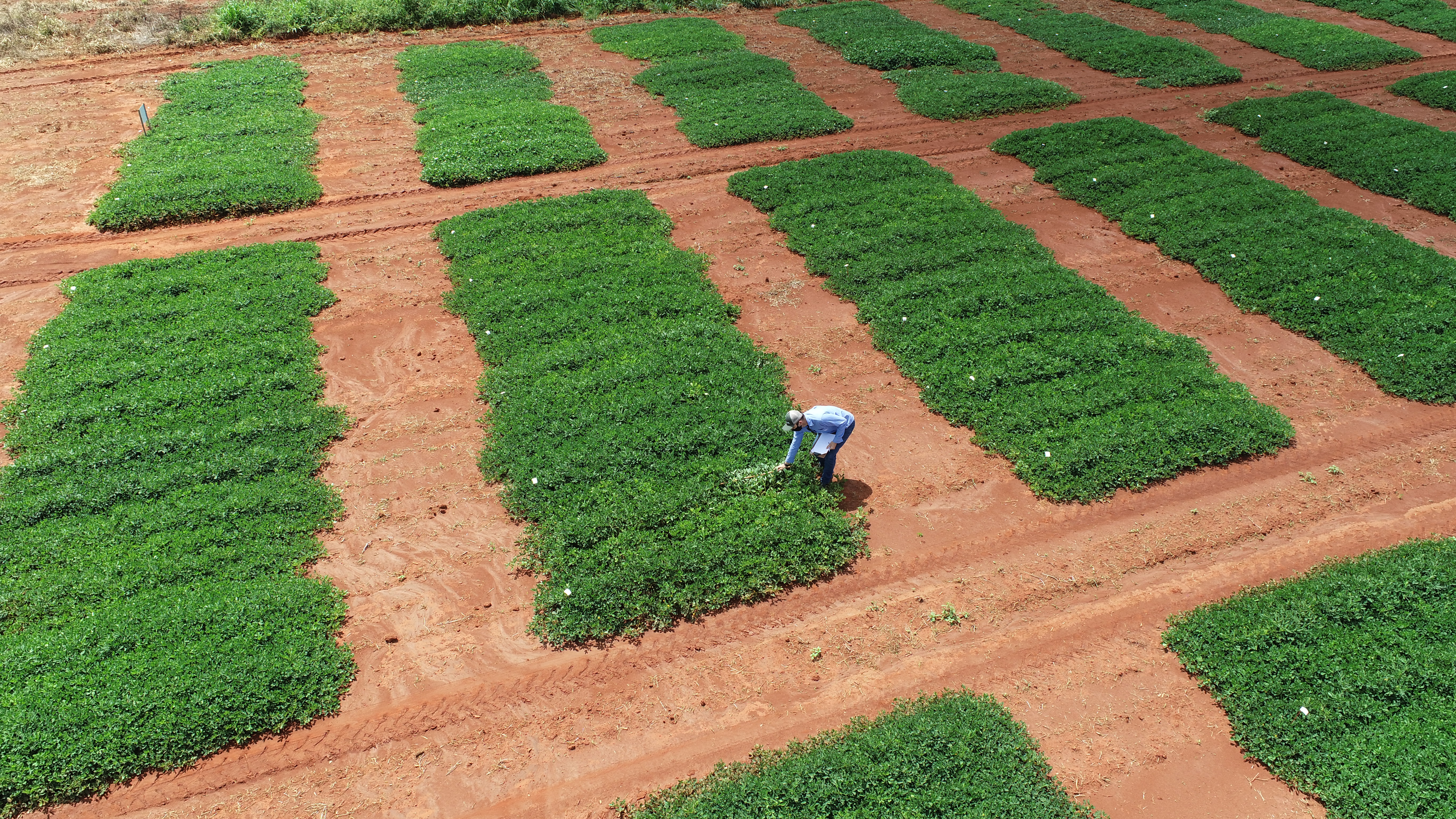Agronomic evaluation for selection of peanut genotypes aiming precocity
DOI:
https://doi.org/10.52755/sas.v2iedesp1.132Keywords:
Arachis hypogaea L., Improvement Program, Precocity, ProductivityAbstract
This study aimed to evaluate the agronomic characteristics of peanut genotypes in the state of Goiás. The experiment was carried out in the experimental area of "‹"‹EMBRAPA Arroz e Feijão, in the agricultural year 2020/21, with manual sowing carried out on December 10, 2020. A randomized block design with four replications was used. The treatments consisted of eight genotypes, seven lines (2133 OL, 2266 OL, 2300 OL, 1253 OL, 2250 OL, 2101 OL and 2717 OL) and one cultivar (BRS 423 OL), all developed by the PMA from EMBRAPA. The plots were composed of two lines of three meters in length, spacing between lines of 0.90 m, interval between plots of two meters and useful plot of 5.4 m2. The cultural and phytosanitary management were carried out in accordance with the recommendations for the crop. The average stand was 14 plants per linear meter. The test was reversed on April 12, 2021, at 123 DAP. It is concluded that the genotypes 2133 OL, BRS 423 OL and 2266 OL had the lowest black spot severities. Only 2717 OL, 2133 OL, 2101 OL and 2266 OL showed grain maturation above 70%. There was a significant difference between the masses of 100 grains, which could serve different market niches. The most productive were 2717 OL, 2101 OL, 2266 OL, 2250 OL, 1253 OL and 2133 OL showed productive potential above 5,200 kg.ha-1, when harvested at 123 DAP.
Downloads

Downloads
Published
How to Cite
Issue
Section
License
Copyright (c) 2021 Jair Heuert, Maxuel Fellipe Nunes Xavier, Taís de Moraes Falleiro Suassuna

This work is licensed under a Creative Commons Attribution-NonCommercial-ShareAlike 4.0 International License.
Autores concordam com os seguintes termos:
a) Os autores mantêm os direitos autorais e concedem à revista o direito de primeira publicação, com o trabalho simultaneamente licenciado sob a LicençaAttribution-NonCommercial-ShareAlike 4.0 International, que permite o compartilhamento do trabalho com reconhecimento da autoria e publicação inicial na Revista SAS. A licença permite o uso, a distribuição e a reprodução irrestrita, em qualquer meio, desde que devidamente citada a fonte. Essa licença permite também que outros remixem, adaptem e criem a partir do seu trabalho para fins não comerciais, desde que atribuam a você o devido crédito e que licenciem as novas criações sob termos idênticos.
b) Não cabe aos autores compensação financeira a qualquer título, por artigos ou resenhas publicados na South American Sciences.
c) Os conceitos expressos nos artigos publicados na South American Sciences são de inteira responsabilidade de seus autores.








